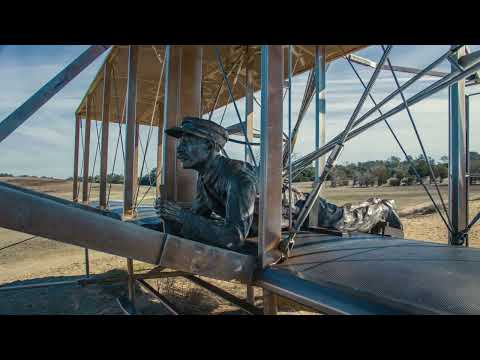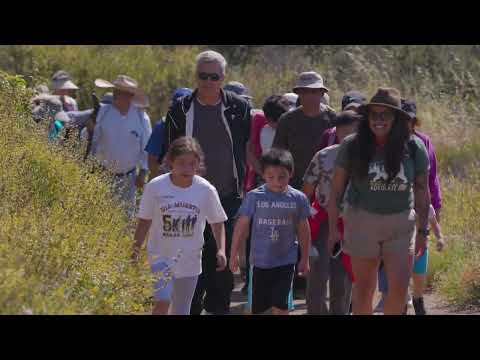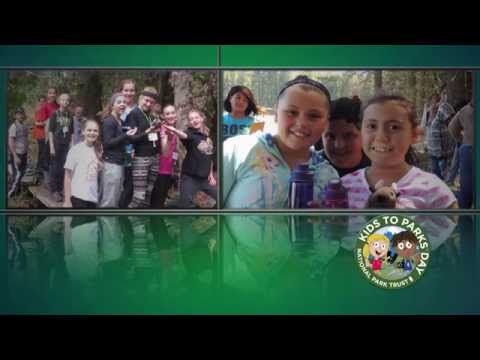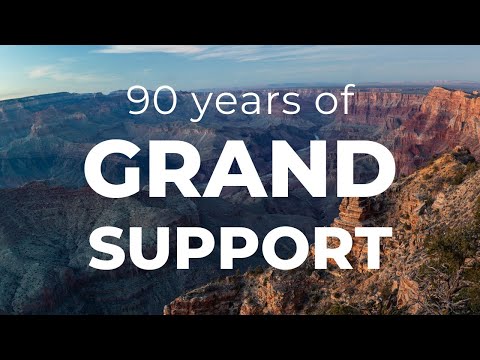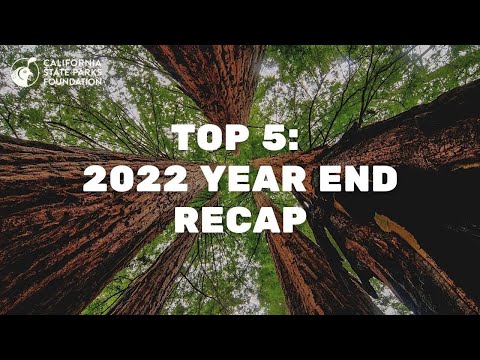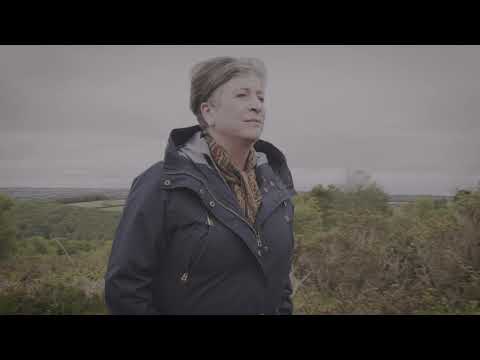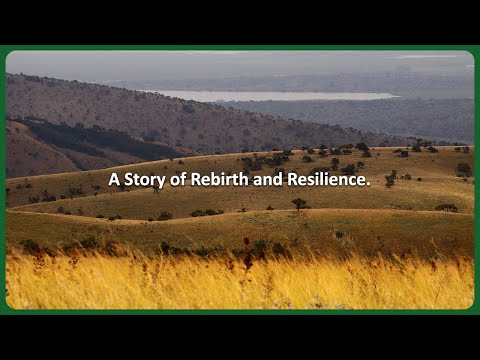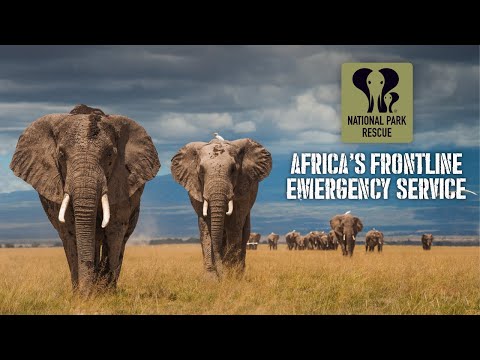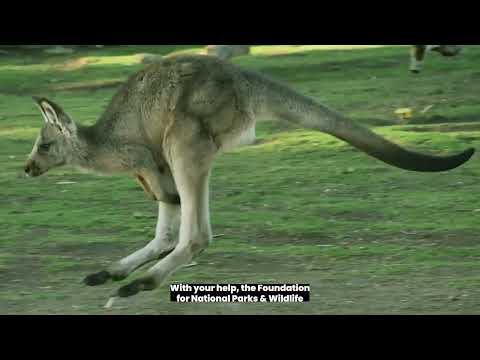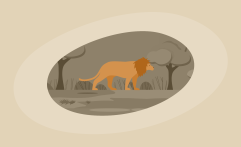9 Best Charities That Protect Our National Parks (Complete 2024 List)
Impactful Ninja is reader-supported. When you buy through links on our site, we may earn an affiliate commission.
Learn more
Learn more
.
Hey fellow impactful ninja ? You may have noticed that Impactful Ninja is all about providing helpful information to make a positive impact on the world and society. And that we love to link back to where we found all the information for each of our posts. Most of these links are informational-based for you to check out their primary sources with one click. But some of these links are so-called "affiliate links" to products that we recommend. First and foremost, because we believe that they add value to you. For example, when we wrote a post about the environmental impact of long showers, we came across an EPA recommendation to use WaterSense showerheads. So we linked to where you can find them. Or, for many of our posts, we also link to our favorite books on that topic so that you can get a much more holistic overview than one single blog post could provide. And when there is an affiliate program for these products, we sign up for it. For example, as Amazon Associates, we earn from qualifying purchases. First, and most importantly, we still only recommend products that we believe add value for you. When you buy something through one of our affiliate links, we may earn a small commission - but at no additional costs to you. And when you buy something through a link that is not an affiliate link, we won’t receive any commission but we’ll still be happy to have helped you. When we find products that we believe add value to you and the seller has an affiliate program, we sign up for it. When you buy something through one of our affiliate links, we may earn a small commission (at no extra costs to you). And at this point in time, all money is reinvested in sharing the most helpful content with you. This includes all operating costs for running this site and the content creation itself. You may have noticed by the way Impactful Ninja is operated that money is not the driving factor behind it. It is a passion project of mine and I love to share helpful information with you to make a positive impact on the world and society. However, it's a project in that I invest a lot of time and also quite some money. Eventually, my dream is to one day turn this passion project into my full-time job and provide even more helpful information. But that's still a long time to go. Stay impactful,Affiliate Disclosure
Why do we add these product links?
What do these affiliate links mean for you?
What do these affiliate links mean for us?
What does this mean for me personally?
![]()
Around the world, national parks conserve ‘wild nature’ for future generations by allowing protected species to flourish. But in recent years, they have become victims of intrusive events, ranging from water shortages and air pollution to climate threats. Furthermore, the dangers posed by invasive species and poaching damage habitats and cause local wildlife to disappear. Fortunately, charities worldwide are fighting to preserve these natural wonders and make them resilient for future generations to enjoy. So we had to ask: What are the best charities that protect our national parks?
The best charities that protect our national parks are the National Park Foundation and the National Parks Conservation Association. Other charities, like Grand Canyon Conservancy and the California State Parks Foundation, defend parks’ endangered ecosystems.
Whether you want to help conserve the ecosystems of national parks, secure parks against destructive technology, or ensure that they withstand human and climate threats, there is a charity for you. Keep reading to learn more about what the best charities that protect our national parks are all about, how they work, and what would be your best way to make a contribution.
Here’s What All the Best Charities That Protect Our National Parks Have in Common
The charities on this list were chosen based on their achievements, overall impact, and transparency ratings.
They operate all over the world, from North America to Asia, safeguarding national parks and all their inhabitants.
Most of the charities below run conservation projects to monitor and rehabilitate the ecosystems of national parks. Through this, they protect wildlife against human threats, like industrial fishing and poaching.
They also aid local flora by planting native plants and removing invasive species. In addition, some charities advocate with local governments for improved park funding and efficient environmental laws. Furthermore, some charities fight to make national parks resilient against climate threats like wildfires and drought.
Yet, through different means, all the charities share the same goal of protecting national parks for future generations to enjoy.
These Are the 9 Best Charities That Protect Our National Parks in 2024
Below are our favorite charities that protect our national parks (you can click on their link to directly jump to their section in this article):
Best Charities That Protect Our National Parks
(At the end of this article we’ll also share our six-step approach on how you can select the best charity to support.)
National Park Foundation: Together, We Make Parks Possible

🔎
Their transparency & ratings:
The National Park Foundation has a 3-star rating from Charity Navigator and holds the Platinum Seal of Transparency from GuideStar.
“It takes all of us to help sustain the vast landscapes and history of our national parks. Our vision is to inspire all people to connect with and protect America’s natural parks.”
National Park Foundation
⚒️
What they do:
The National Park Foundation’s programs safeguard the natural habitats of national parks. For example, they work to conserve endangered areas by purchasing privately-owned lands and adding them to the parks. They also protect sensitive ecosystems from the parks by restoring wetlands, removing invasive species, and stabilizing eroded shorelines. Moreover, they monitor local wildlife in parks to increase the number of animals. They also work to make parks sustainable by reducing waste and powering them with renewable energy. In addition, they work to accommodate park visitors without putting a strain on the landscapes.
🚀
What they’ve achieved:
Since their founding, the National Park Foundation has been permanently protecting over 135,000 acres in 66 national parks. For example, in 2021, they impacted 220 parks by investing nearly $90 million across their grants and programs. In the same year, they rehabilitated or restored over 185,000 acres of native habitat and helped preserve 18 at-risk species in 22 national parks. They also improved nearly 1,000 miles of trails and planted over 103,000 trees and types of vegetation inside the parks. Furthermore, between 2015 and 2021, they helped divert over 18 million pounds of waste from parks sites.
✨
Ways to contribute:
You can donate to the National Park Foundation on their website. You can also support them by shopping on their online store, becoming a community partner, or subscribing to their newsletter.
National Parks Conservation Association: Preserving Our Past. Protecting Our Future.
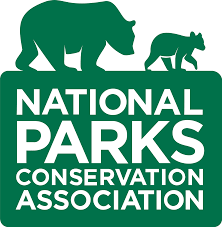
🔎
Their transparency & ratings:
The National Parks Conservation Association has a 4-star rating from Charity Navigator and holds the Gold Seal of Transparency from GuideStar.
“We celebrate our natural parks — and work tirelessly to defend them — whether on the ground, in the courtroom, or on Capitol Hill.”
National Parks Conservation Association
⚒️
What they do:
The National Parks Conservation Association runs advocacy campaigns and rallies to raise awareness of issues affecting the US national parks. For instance, they work with legislators to protect natural ecosystems in the parks from invasive acts such as coal mining or private toll lanes. They also fight to decrease air pollution around park units to secure the health of local vegetation. Moreover, they conserve parks’ water resources by stopping industrial fish farming and leakages of toxic chemicals in lakes. In addition, they work to safeguard parks’ inhabitants, from North Cascade grizzly bears to marine wildlife and monuments.
🚀
What they’ve achieved:
Since their inception, the National Parks Conservation Association has defended the wildlife and habitats of national parks. For example, they implemented the Regional Haze Rule to reduce carbon dioxide pollution in national parks and surrounding areas, which led to the closing of 100 coal-fired power plants nationwide. Moreover, they saved unique ecosystems by establishing a new national park and a national preserve, along with monument protection laws in the California desert. Also, in 2021, they invested $21,5 million in their “National Parks Thrive” program to make natural parks more sustainable.
✨
Ways to contribute:
You can donate to the National Parks Conservation Association on their website. You can also join their advocacy campaigns or participate in their public awareness events. In addition, you can buy their merchandise or join their national park tours.
National Park Trust: Treasure Forever

🔎
Their transparency & ratings:
The National Park Trust has a 4-star rating from Charity Navigator and holds the Platinum Seal of Transparency from GuideStar.
“Our vision is for everyone to experience the endless possibilities of our nation’s parks.”
National Park Trust
⚒️
What they do:
The National Park Trust works to acquire privately-owned land across US national parks to better preserve the flora and fauna found there. Moreover, they monitor local habitats and fight to remove private mining claims. They also run Youth & Family Programs to ensure that young people enjoy and understand their role in stewarding these protected regions. For instance, through their Youth Leadership Program, children volunteer to share their experiences at national parks with others, to educate and inspire stewardship. In addition, they also help college students to increase participation in and awareness of natural parks.
🚀
What they’ve achieved:
Since their founding, the National Park Trust has succeeded at adding over 25,500 acres to the nation’s parks in 32 states, DC, and the US Virgin Islands. For example, in 2021, they helped restore 51 park sites and 33 unique ecosystems. In the same year, they rehabilitated 18 historical and archeological sites, along with 23 waterways, including lakeshores, rivers, and beaches. Furthermore, their Youth & Family Programs gathered over 76,000 participants from 240 schools and nonprofits, who made 280 educational trips and hikes to the parks.
✨
Ways to contribute:
You can donate to the National Park Trust on their website. You can also contribute by buying their merchandise, joining their Kids to Parks Day, or downloading their mobile app.
Grand Canyon Conservancy: Preserving and Protecting the Grand Canyon
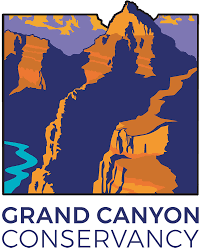
🔎
Their transparency & ratings:
Grand Canyon Conservancy has a 4-star rating from Charity Navigator and holds the Gold Seal of Transparency from GuideStar.
“Our mission is to inspire generations of park champions to cherish and support the natural and cultural wonder of Grand Canyon.”
Grand Canyon Conservancy
⚒️
What they do:
Grand Canyon Conservancy improves wildlife management and species protection in Grand Canyon through community partnerships. For this, they sponsor research projects and engage youth in seasonal work to restore native plant species and historic structures. They also rehabilitate walking trails to improve the visitor experience while safeguarding sensitive habitats. Moreover, they work on a Desert View Heritage Site to preserve the culture of native tribes of the Grand Canyon region. In addition, they work to diminish light pollution in the canyon to keep it one of the last places in the US where one can experience a star-filled night sky.
🚀
What they’ve achieved:
Since their inception, Grand Canyon Conservancy has continued to promote and defend the natural landscapes of this national park. For example, in 2019, they succeeded to certify it as an International Dark Sky Park, allowing visibility of the full Milky Way. In addition, in 2020, they rerouted and improved 7.5 miles of trails to increase safety and protect valuable ecosystems. In the same year, they engaged 13,500 children in environmental education and actions to preserve the park. Furthermore, in 2021, they invested over $800,000 to conserve and restore natural habitats, wildlife, and walking trails.
✨
Ways to contribute:
You can donate to Grand Canyon Conservancy on their website. You can also contribute by taking part in their guided trips. In addition, you can become a member of the Conservancy and access member-only perks.
California State Parks Foundation: Champion Your California

🔎
Their transparency & ratings:
The California State Parks Foundation has a 3-star rating from Charity Navigator and holds the Platinum Seal of Transparency from GuideStar.
“We believe that all Californians are essential to sustaining our state parks. We are building a movement of park supporters to ensure the long-term sustainability of our incredible state park treasures.”
California State Parks Foundation
⚒️
What they do:
The California State Parks Foundation does advocacy and field work to protect biodiversity across California’s national parks. For instance, they fight to conserve parks’ ecosystems and species in danger of extinction, such as the monarch butterfly and other animals. Furthermore, the charity advocates for increased funding for the parks to safeguard their habitats and monuments. They also manage the cultural heritage of the parks, such as historical sites and archaeological specimens. In addition, they implement programs to make the parks resilient against wildfires, sea-level rise, or other climate threats.
🚀
What they’ve achieved:
To date, the California State Parks Foundation has raised more than $300 million to benefit the state’s 279 park units. They have also worked to protect 280 miles of coastline, 625 miles of lake and river shores, and 3,000 miles of trails. For example, in 2021, their volunteers planted over 10,000 plants and removed more than 560,000 square feet of invasive species. In the same year, they fought to preserve the monarch butterfly population by clearing out 600 square feet of invasive species and planting 3,500 monarch-pollinating plants. In addition, they invested over $6 million across their rehabilitation programs.
✨
Ways to contribute:
You can donate to the California State Parks Foundation on their website. You can also volunteer or buy on their online store. In addition, you can become a member of their supporter community.
Campaign for National Parks: Keeping Beautiful Places Safe
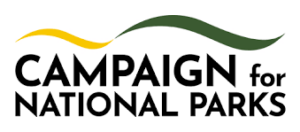
🔎
Their transparency & ratings:
According to their financial report, the Campaign for National Parks spent 83.5% of their total income on charitable activities and 16.5% on fundraising campaigns.
“We believe that our National Parks are beautiful and inspirational places, and want to engage everyone in enjoying and looking after them.”
Campaign for National Parks
⚒️
What they do:
The Campaign for National Parks works across British National Parks to protect and beautify them. For instance, they fight to secure the Parks against inappropriate or over-development that compromise local wildlife and habitats. Among these, they militate against fracking, which pollutes the groundwater and damages the stability of the land. They also campaign for electrical pylons to be rerouted or undergrounded, as they ruin the landscapes and views. Moreover, they fund walking and cycling trails to reduce the number of roads and cars inside the Parks, thus minimizing CO2 emissions and improving air quality.
🚀
What they’ve achieved:
Since their founding, the Campaign for National Parks has continued to safeguard natural, protected areas. For example, in 2019, they worked with 12 nonprofit partners to invest $326,000 across 17 campaigns and submissions to national policymakers. Moreover, in 2022, they successfully received $53 million in funding from the government to remove electrical pylons in the Peak District National Park and replace them with underground cables. In the same year, they launched the National Parks: New Perspectives scheme to encourage youth to participate in decision-making for environmental projects in the Parks.
✨
Ways to contribute:
You can donate to the Campaign for National Parks on their website. You can also join their awareness events or join as a volunteer. In addition, you can contribute with personal photos of the Parks.
African Parks: Protecting Africa’s Intact Nature
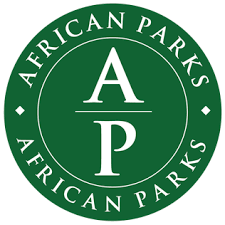
🔎
Their transparency & ratings:
African Parks has a 100% encompass score for Accountability and Finance from Charity Navigator. They also hold the Gold Seal of Transparency from GuideStar.
“We use a clear business approach to conserving Africa’s wildlife, securing vast landscapes and carrying out the necessary activities needed to protect the parks and their animals.”
African Parks
⚒️
What they do:
African Parks run law enforcement operations to prevent and discourage poaching or other threats across the parks. Their ranger units undergo training to remove snares and do aerial surveillance. Moreover, they improve parks’ infrastructure to save endangered or isolated animals. They also run patrols to arrest bushmeat or ivory poachers and illegal fishermen. Furthermore, the charity fights to conserve the wildlife of Africa’s national parks by monitoring their health and migration needs. In addition, they work with communities and schools to teach locals how to care for and sustainably preserve their national parks.
🚀
What they’ve achieved:
Today, African Parks manages 22 national parks and protected areas in 12 countries covering over 20 million hectares. For example, in 2021, their rangers confiscated 28.4 tons of illegal wildlife products, including ivory and bushmeat. They also made the parks safer by removing over 26,000 snares and making nearly 2,700 poacher arrests. In the same year, they helped protect more than 33,000 species of animals, including 21,000 elephants and nearly 10,000 primates. They have also conducted animal translocations, lifting 288 animals in 2021 and 500 elephants in 2016.
✨
Ways to contribute:
You can donate to African Parks on their website. You can also support them by joining their team, subscribing to their newsletter, or following their Twitter account.
National Park Rescue: Africa’s Frontline Emergency Service
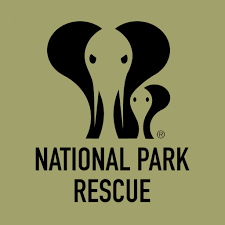
🔎
Their transparency & ratings:
According to their financial report, the National Park Rescue spent 70% of their total income on charitable activities and 30% on net movement in funds.
“Our mission is to give wildlife the protection it deserves. Africa’s dying National Parks are the last safe havens for wildlife, each protecting huge numbers of elephants, lions, rhinos and other animals.”
National Park Rescue
⚒️
What they do:
The National Park Rescue engages in direct-action operations to restore effective law enforcement, shut down corruption, and discourage the illegal killing of wildlife. In addition, they recruit and train 95% of their rangers from the local population to create jobs and empower locals to save their natural heritage. They also run all-female scout teams to empower unemployed single mothers from Africa’s poorest communities. Their rangers patrol endangered natural parks to ambush poachers and protect wildlife from snares or other threats. The charity also works with governments to eliminate organized criminal gangs that fund poachers.
🚀
What they’ve achieved:
To date, the National Park Rescue has continued to save African national parks on the edge of collapse. For example, between 2019 and 2021, over 30 rangers improved Zimbabwe’s Chizarira National Park by arresting 300% more poachers than official law enforcement. After their interventions, poaching indicators went down by 98%, and elephant poaching went down by 90%. Also, the lion population went up by 40%. In addition, they helped build over 225 km of park roads that they continued to patrol with 6 special intervention vehicles to monitor the park.
✨
Ways to contribute:
You can donate to the National Park Rescue on their website. You can also share their Recruit a Ranger flier to advocate for the preservation of African National Parks.
Foundation for National Parks & Wildlife: Growing Parks and Saving Species

🔎
Their transparency & ratings:
According to their financial report, the Foundation for National Parks & Wildlife spent 80% of their total income on charitable activities, 12.2% on administration costs, and 6% on fundraising campaigns.
“Together, we are making conservation happen.”
Foundation for National Parks & Wildlife
⚒️
What they do:
The Foundation for National Parks & Wildlife manages projects that safeguard Australia’s natural parks. For instance, they fight to save disappearing species, like the koala bear and the malleefowl, by monitoring and conserving their habitat. They also save endangered mountain species from the parks by running captive breeding programs. In addition, they recover local fauna after bushfires through specialized programs and habitat restoration. They also run tree planting projects to rehabilitate native species in natural parks nationwide.
🚀
What they’ve achieved:
To date, the Foundation for National Parks & Wildlife has worked with 50 organizations and invested over $60 million in 94 projects that fought to preserve Australia’s national parks. For example, in 2021, in response to recent bushfires, they recovered and regenerated 1,000 hectares of land to support local biodiversity and planted 250,000 native tree species. In the same year, they funded $1 million to support 312 veterinarians nationwide to rescue and treat 355,000 endangered animals from the parks.
✨
Ways to contribute:
You can donate to the Foundation for National Parks & Wildlife on their website. You can also start a fundraiser or consider corporate volunteering and corporate partnerships.
How Can You Select the Best Charities to Support?
The charities on the list are, we deem, the best charities that protect our national parks. However, you may have a particular charity you want to support. Let’s look at what you can do to ensure your contribution has the most significant impact.
- Check out the charity website. Charities that are worthy of your donations are transparent in their mission and their figures. Familiarize yourself with their history, mission, and values. Their website usually is the best place to start.
- Identify the charity’s mission. Without a goal, the charity is likely to fail. If the charity’s mission isn’t clear, it’s probably worth looking for a charity that does have a clear mission.
- Check if the charity has measurable goals. An effective charity has clear goals. You want to know your donation will help the charity reach its goals. But if it doesn’t have targets, it’s likely to fail or squander your gift. The charity should be able to account for its spending and supply evidence of the work they do.
- Assess the successes or goals the charity has achieved. You wouldn’t invest in a business if it kept missing its targets. In the same way, charities are like this too. If no one is assessing a charity’s progress in reaching its targets, the chances are they’re not making a substantial positive change.
- Check the charity’s financials and stats. Trustworthy organizations will publish financial statements and reports each year. Some might be exempt from having to do so, but they should be able to provide them to public members who are interested in donating.
- Locate sources who work with or benefit from the charity. Word of mouth and first-hand experience of a charity’s work lets you know the charity’s quality. If you’re able to do so, check out the charity for yourself or speak to someone familiar with it. This way, your donation will go to the right place.
How Can You Best Support These Charities?
After you’ve made your decision, it’s time for you to decide on how you’d like to help the charities you’ve chosen. Check how you can help – each charity runs specific programs that have unique aims. Find out what the aim of such programs is and whether they are right for you.
Here are a few ways you can help your chosen charity:
- Donate money. You can find donation pages on the website of most charities. Your donation can be a one-time payment, or you can set it to be deducted regularly at different intervals. You can mostly pay via credit card, but some charities also take PayPal or Bitcoin payments.
- Buy their official merchandise. The charities can also raise money by selling merchandise. So, you can support them by buying the mugs, shirts, caps, pens, pencils, and any other such items they may be selling. Ideally, you should buy as much as you can to share and spread the word about the charity’s activities.
- Engage in volunteer work. As you’ve seen from our descriptions above, some charities engage in a lot of local and grassroots programs. You can help by taking on and organizing the program in your local area.
- Help their fundraising efforts. You can spread the word about the charity in your workplace, school, church, etc., and hold creative fundraising drives on social media or offline within your small circles.
- Share their stories. Most charities have compelling stories that you can share with your audience to attract more people to the cause.
Final Thoughts
Now it is up to you to select the charity that resonates most with you. And whichever charity you end up choosing and contributing to, we are sure that they will immensely appreciate your support. Hopefully, the information within this article has made this selection process a bit easier for you to support charities dedicated to protecting our national parks – based on the causes that matter most to you.
Stay impactful,

PS: Finally, I want to leave you with a thought-provoking TED talk from Dan Pallotta, a leading philanthropic activist and fundraiser, about what is wrong with the way we think about charities – and what we can do about it:
Sources
- National Geographic: National Park Issues
- National Geographic: National parks are being overrun by invasive species
- Science Direct: How does poaching affect the size of national parks?
- The National Park Foundation: home page
- Charity Navigator: The National Park Foundation
- GuideStar: The National Park Foundation
- The National Park Foundation: landscape and wildlife conservation
- The National Park Foundation: land conservation
- The National Park Foundation: habitat conservation
- The National Park Foundation: wildlife
- The National Park Foundation: resilience and sustainability
- The National Park Foundation: parks for the future
- The National Park Foundation: our work
- The National Park Foundation: 2021 annual report
- The National Park Foundation: donate
- The National Park Foundation: merchandise
- The National Park Foundation: community partnerships
- The National Park Foundation: newsletter
- The National Parks Conservation Association: home page
- National Park Service: home page
- The National Parks Conservation Association: our story
- Charity Navigator: The National Parks Conservation Association
- GuideStar: The National Parks Conservation Association
- The National Parks Conservation Association: advocacy
- The National Parks Conservation Association: protecting landscapes
- The National Parks Conservation Association: Protect Alaska’s Parks from Destructive Mining!
- The National Parks Conservation Association: Protecting our parks from private toll lanes
- The National Parks Conservation Association: cleaning the air
- The National Parks Conservation Association: protecting and restoring water
- The National Parks Conservation Association: Acadia Is No Place for Industrial Fish Farming
- The National Parks Conservation Association: Stand Up to Polluters at Indiana Dunes
- The National Parks Conservation Association: protecting wildlife
- The National Parks Conservation Association: Recover North Cascade grizzlies
- The National Parks Conservation Association: Protect Marine Wildlife at Biscayne National Park
- The National Parks Conservation Association: Protect America’s Marine Monuments
- The National Parks Conservation Association: More Than 100 Reasons to Keep Fighting for Clean Air
- The National Parks Conservation Association: Administration Rolls Back Methane Waste Protections
- The National Parks Conservation Association: Great Basin National Park
- The National Parks Conservation Association: Tallgrass Prairie national preserve
- The National Parks Conservation Association: National Monuments in the California Desert
- The National Parks Conservation Association: 2021 annual report
- The National Parks Conservation Association: our strategic plan
- The National Parks Conservation Association: donate
- The National Parks Conservation Association: merchandise
- The National Parks Conservation Association: events
- The National Parks Conservation Association: trips
- The National Park Trust: home page
- Charity Navigator: The National Park Trust
- GuideStar: The National Park Trust
- The National Park Trust: park preservation
- The National Park Trust: Valles Caldera National Preserve, NM
- The National Park Trust: Kodiak Brown Bear Trust, AK
- The National Park Trust: Joshua Tree National Park, CA
- The National Park Trust: Wrangell-St. Elias National Park and Preserve, AK
- The National Park Trust: youth and family programs
- The National Park Trust: youth leadership program
- The National Park Trust: college ambassador program
- The National Park Trust: celebrating 40 years
- The National Park Trust: 2021 annual report
- The National Park Trust: donate
- The National Park Trust: shop
- The National Park Trust: Kids to Parks Day
- The National Park Trust: park passport mobile app
- Grand Canyon Conservancy: home page
- Charity Navigator: Grand Canyon Conservancy
- GuideStar: Grand Canyon Conservancy
- Grand Canyon Conservancy: discovery and exploration
- Grand Canyon Conservancy: educational content
- Grand Canyon Conservancy: trails forever
- Grand Canyon Conservancy: Desert View
- Grand Canyon Conservancy: dark skies
- Grand Canyon Conservancy: 2021 annual report
- Grand Canyon Conservancy: donate
- Grand Canyon Conservancy: all classes and tours
- Grand Canyon Conservancy: membership
- The California State Parks Foundation: home page
- The California State Parks Foundation: mission
- Charity Navigator: The California State Parks Foundation
- GuideStar: The California State Parks Foundation
- The California State Parks Foundation: issues
- The California State Parks Foundation: wildlife and nature
- The California State Parks Foundation: monarchs
- The California State Parks Foundation: California wildlife guide
- The California State Parks Foundation: park funding
- The California State Parks Foundation: history and culture
- The California State Parks Foundation: wildfires
- The California State Parks Foundation: sea-level rise
- The California State Parks Foundation: climate resiliency
- The California State Parks Foundation: impact
- The California State Parks Foundation: 2021 annual report
- The California State Parks Foundation: donate
- The California State Parks Foundation: volunteer
- The California State Parks Foundation: merchandise
- The California State Parks Foundation: membership
- The Campaign for National Parks: home page
- The Campaign for National Parks: history and achievements
- The Campaign for National Parks: financial statements
- The Campaign for National Parks: our work
- The Campaign for National Parks: more beautiful
- The Campaign for National Parks: better protected
- The Campaign for National Parks: Raising the bar: improving nature in our National Parks
- The Campaign for National Parks: fracking
- The Campaign for National Parks: calling for pylon-free views
- The Campaign for National Parks: reducing roads
- The Campaign for National Parks: accessible to all
- The Campaign for National Parks: 2019 annual report
- The Campaign for National Parks: 2022 annual report
- Peak District National Park: home page
- The Campaign for National Parks: donate
- The Campaign for National Parks: events
- The Campaign for National Parks: volunteer
- The Campaign for National Parks: photography
- African Parks: home page
- Charity Navigator: African Parks
- GuideStar: African Parks
- African Parks: park protection
- African Parks: management and infrastructure
- African Parks: saving wildlife
- African Parks: community development
- African Parks: our story
- African Parks: 2021 annual report
- African Parks: 500 Elephants
- African Parks: donate
- African Parks: careers
- African Parks: newsletter
- Twitter: African Parks
- The National Park Rescue: home page
- The National Park Rescue: financial report
- The National Park Rescue: Why We Are so Effective
- The National Park Rescue: about
- The National Park Rescue: donate
- The National Park Rescue: Recruit a Ranger
- The Foundation for National Parks & Wildlife: home page
- The Foundation for National Parks & Wildlife: financial report
- The Foundation for National Parks & Wildlife: projects
- The Foundation for National Parks & Wildlife: Koala projects
- The Foundation for National Parks & Wildlife: Malleefowl
- The Foundation for National Parks & Wildlife: Mountain Pygmy-Possum
- The Foundation for National Parks & Wildlife: Bushfire Recovery Program
- The Foundation for National Parks & Wildlife: Habitat Restoration
- The Foundation for National Parks & Wildlife: Plant a Tree for Me!
- The Foundation for National Parks & Wildlife: 2021 annual report
- The Foundation for National Parks & Wildlife: donate
- The Foundation for National Parks & Wildlife: fundraising
- The Foundation for National Parks & Wildlife: corporate volunteering
- The Foundation for National Parks & Wildlife: corporate partners
